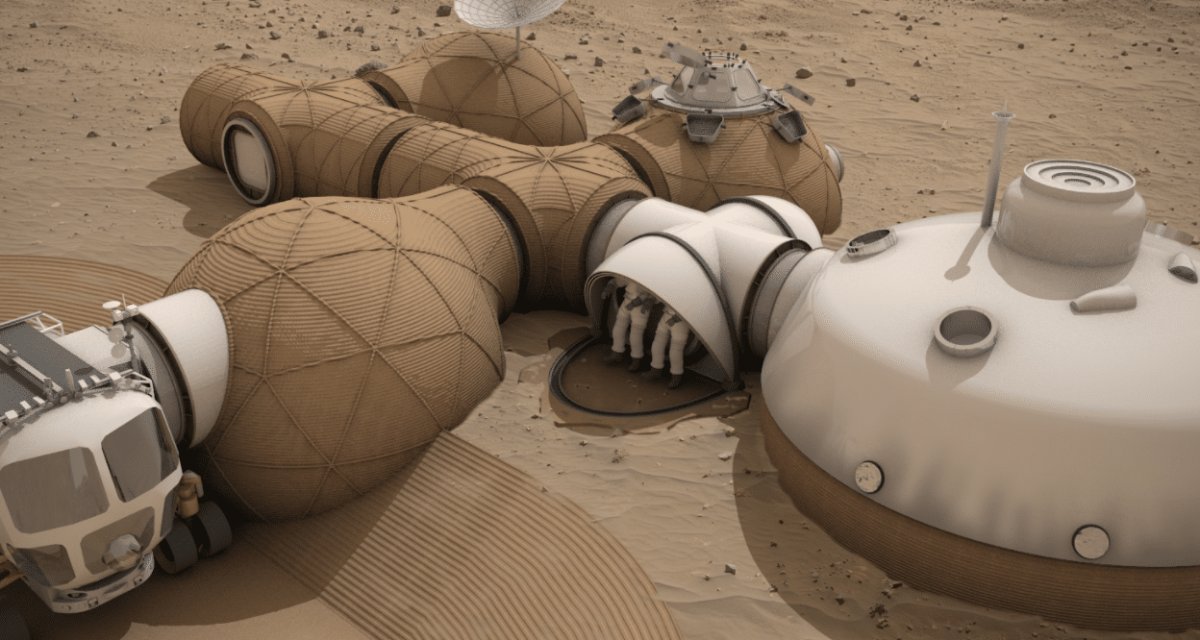
The surface of Mars is a barren landscape riddled with peril. From high energy radiation to barreling sandstorms, it is unbearably dry and currently unsurvivable for human beings. However, with the looming possibility of a manned mission to Mars, and future prospects of populated colonies on the Red Planet, NASA has been investigating different habitats that would best protect humans from the harsh elements.
NASA accepted more than 165 applications for a Mars habitat design contest this past year as part of their Centennial Challenges program that engages the public in the advancement of technology. Utilizing the public to innovate in this manner has allowed for an influx of creativity. Applicants have 3D printed models of their designs, and while the ultimate winner was the ‘Mars Ice House,’ there were a number of promising and intriguing designs. Below are the top three winners of this contest.
Third Place
The third place winner of this contest was Team LavaHive. As their name indicates, their model is to be constructed with recycled spacecraft materials and ‘lava-casting.’ Regolith (the rocks and soil that lie loosely on the surface) would be made molten and shaped into coils and layers to form the shapes of the habitat. Each shape created would be sprayed with an adhesive to ensure that it is airtight. This method would protect not only against the harsh sand and wind elements, but also against high-energy radiation. These structures would exist both above and below the Martian surface, with the capacity to add additional subterranean modules.


Second Place
The second place winner was Team Gamma. Their model is designed to be constructed by pre-programmed, semi-autonomous robots on the surface of Mars prior to the arrival of human astronauts. Each habitat may hold up to four adults and will be built using 3D printed structure, inflatable modules, and regolith. The regolith would be fused using microwaves, creating a barrier that would protect against radiation. The structures would exist both above and below the surface.
One unique aspect of this model is that the robots will not be given exact step-by-step directions. Instead, they will be given rules and objectives. This will allow them to operate even if communication fails and there are unexpected difficulties.
According to the project description:
The design of the compact 93 sqm habitat modules combines spatial efficiency with human physiology and psychology, with overlapping private and communal spaces, finished with ‘soft’ materials and enhanced virtual environments, which help reduce the adverse effects of monotony, while creating positive living environment for the astronauts.


First Place
The ultimate winner of this contest was Team Space Exploration Architecture and Clouds Architecture Office of New York, New York, or Team Mars Ice House as they are known. Kevin Vipavetz, the senior systems engineer at NASA’s Langley research center, and his team considered “many crazy, out of the box ideas and finally converged on the current Ice Home design, which provides a sound engineering solution.”
The Ice House is a large inflatable dome surrounded by a layer of 3D printed ice and a relatively thin layer of loose regolith. This strategy relies on the assumption of water in Mars’ northern hemisphere. This model is most capable of protecting human life against the intense cosmic and solar radiation, and surface contamination, while also allowing the structure to be completely above ground. The dome will feature an outer and inner shell, allowing for movement without a spacesuit and the possibility of growing plants.
All three of these designs might look outlandish and improbable, but they are structurally sound and capable of supporting human life and innovation. Some day, far into the future, one of these designs could be your future home on Mars.